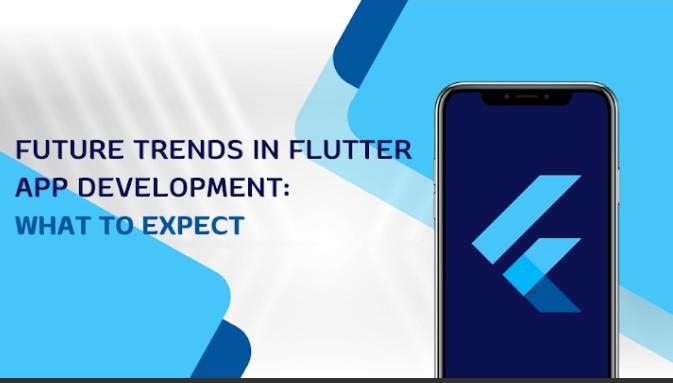
Future Trends in Flutter App Development: What to Expect
In the fast-paced world of mobile app development, React Native and Flutter have emerged as leading frameworks for building high-quality cross-platform applications. React Native, known for its flexibility and performance, has garnered attention for its seamless integration with existing codebases.
While the ever-changing landscape of Flutter app development and design is being constantly influenced by advancements. The formidable framework of Flutter and its capacity to produce visually striking cross-platform applications have propelled it to great popularity among app developers.
This blog post explores the emerging trends that are shaping the future of Flutter, offering developers valuable insights into what they can expect in the years to come. Whether you’re in search of a reliable Flutter app development company or interested in obtaining top-notch React Native app development services, this blog serves as an indispensable guide to the future of mobile app development.
Flutter App Development Trends in 2023
Flutter is poised to shape the app development trends in 2023 with its revolutionary features and capabilities. Below are some of the latest app developments trends.
Continued Growth and Adoption
Since its inception, Flutter has experienced remarkable expansion, and this positive trend is anticipated to persist in the coming years. As an increasing number of developers acknowledge the advantages offered by Flutter, such as its rapid development process, versatile UI capabilities, and ability to create a single codebase for multiple platforms, the rate of its adoption is poised to skyrocket. The burgeoning community surrounding Flutter will actively contribute to an ecosystem replete with abundant resources, libraries, and tools, thereby enhancing the framework’s potency and efficacy even further.
Improved Performance and Optimization
In the realm of app development, performance holds paramount importance, and Flutter has remained dedicated to incessantly improving performance and optimization. The framework is poised to unveil several noteworthy features geared towards accelerating hot reload, diminishing app size, and enhancing rendering performance. These optimizations will translate into seamless animations, expedited startup times, and an overall heightened user experience.
Stronger Design and Animation Tools
Flutter has already demonstrated its ability to deliver visually appealing and highly interactive user interfaces. In the future, we can expect even more powerful design and animation tools that simplify the creation of beautiful UIs. The Flutter team is actively working on improving tools like Flutter Inspector, which enables developers to inspect and debug UI elements effectively.
Enhanced Desktop Support
Flutter initially focused on mobile app development, but its capabilities are expanding rapidly. The Flutter team has been working on extending support for desktop platforms, including Windows, macOS, and Linux. With the “Hummingbird” project, developers can expect to build robust desktop applications using Flutter, thereby broadening the range of applications that can be developed with the framework.
Integration with Foldable Devices
Foldable smartphones and devices with flexible displays are becoming increasingly popular. Flutter developers can look forward to native support for building apps that adapt seamlessly to these foldable form factors. By utilizing Flutter’s flexible UI system, developers will be able to create apps that can intelligently respond to changes in screen size, layout, and multitasking capabilities of foldable devices.
Machine Learning and AI Integration
With the growing demand for intelligent applications, Flutter is likely to see increased integration with machine learning (ML) and artificial intelligence (AI) frameworks. Google’s ML Kit already provides a Flutter plugin that enables developers to incorporate ML capabilities into their apps. As ML and AI technologies continue to advance, Flutter will offer more native support for integrating these technologies seamlessly.
Augmented Reality and Virtual Reality Experiences
AR and VR are transforming the way users interact with digital content. Flutter developers can anticipate improved support for creating immersive AR and VR experiences. By leveraging plugins and libraries, developers will be able to integrate AR/VR functionalities into their Flutter apps, opening up new possibilities in gaming, education, training, and more.
Conclusion
The future of Flutter app development appears promising, with a growing community, extended platform support, and captivating technological advancements.
Additionally, with the framework’s continuous evolution, developers can anticipate improved performance, broader platform compatibility, and effortless integration with emerging technologies such as machine learning, AR, and VR.
By staying updated on these trends, developers can harness the complete potential of Flutter and deliver exceptional cross-platform applications that cater to the evolving needs of users. Whether you’re seeking React Native app development services or exploring Flutter’s capabilities, embracing these future-oriented trends is crucial for staying ahead in the dynamic app development landscape.
Happy Reading!!







